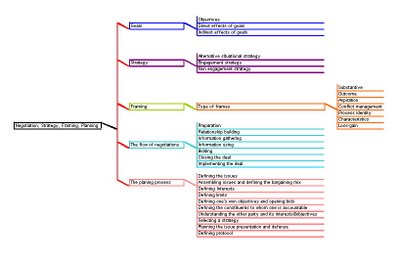
Essentials of negotiation
Chapter 4
As for the Integrative Negotiation, negotiators must focuses on commonalties rather than differences. it attempts address needs and interest, not positions, it also commit to meet the needs of all involved paties.
The success of integrative negotiation depends on a search for solutions that meet the objectives and needs. Integrative Negotiation requires a process fundamentally different from that of distributive bargaining. Negotiators must attempt to probe below the surface of the other party’s position to discover the underlying needs.
Integrative Negotiation process:
Create a flow of information
Understand the other's needs and objectives
Emphasize the commonalties between the parties
Search the solution to meet the both goals
Therefore, The key step in Integrative Negotiation are to indentify the problem, to understand the problem, to generate the solutions, and to evaluate the alternatives
- To identify the problem, we have to define a problem in a way that acceptable to both sides, state the problem as a goal and identify the obstacles to attain this goal, and at last seperate the problem definition from the search of solutions.
- To understand the problem, we have to understand the interests and needs. Such interests including substantive interests relating to key issues in the negotiation, process interests relating to the way the dispute is settled, relationship interests indicating one or both parties value in their relationship, and interests in principle in doing what is right and fair.
- To generate alternative solutions, we have to use the tools such as brainstorming, nominal groups or surveys.
- To evaluate the alternatives, we have to narrow the range of solutions options and evaluate solutions by quality, acceptability, objective standards.
There are some factors that could lead to the successful Integrative Negotiation. For example, some common objective, solving ability, a belief in validity of one's own position and the other's perspective, the motivation to work together, trust, accurate communication, and the understanding of the dynamics of integrative negotiation.










